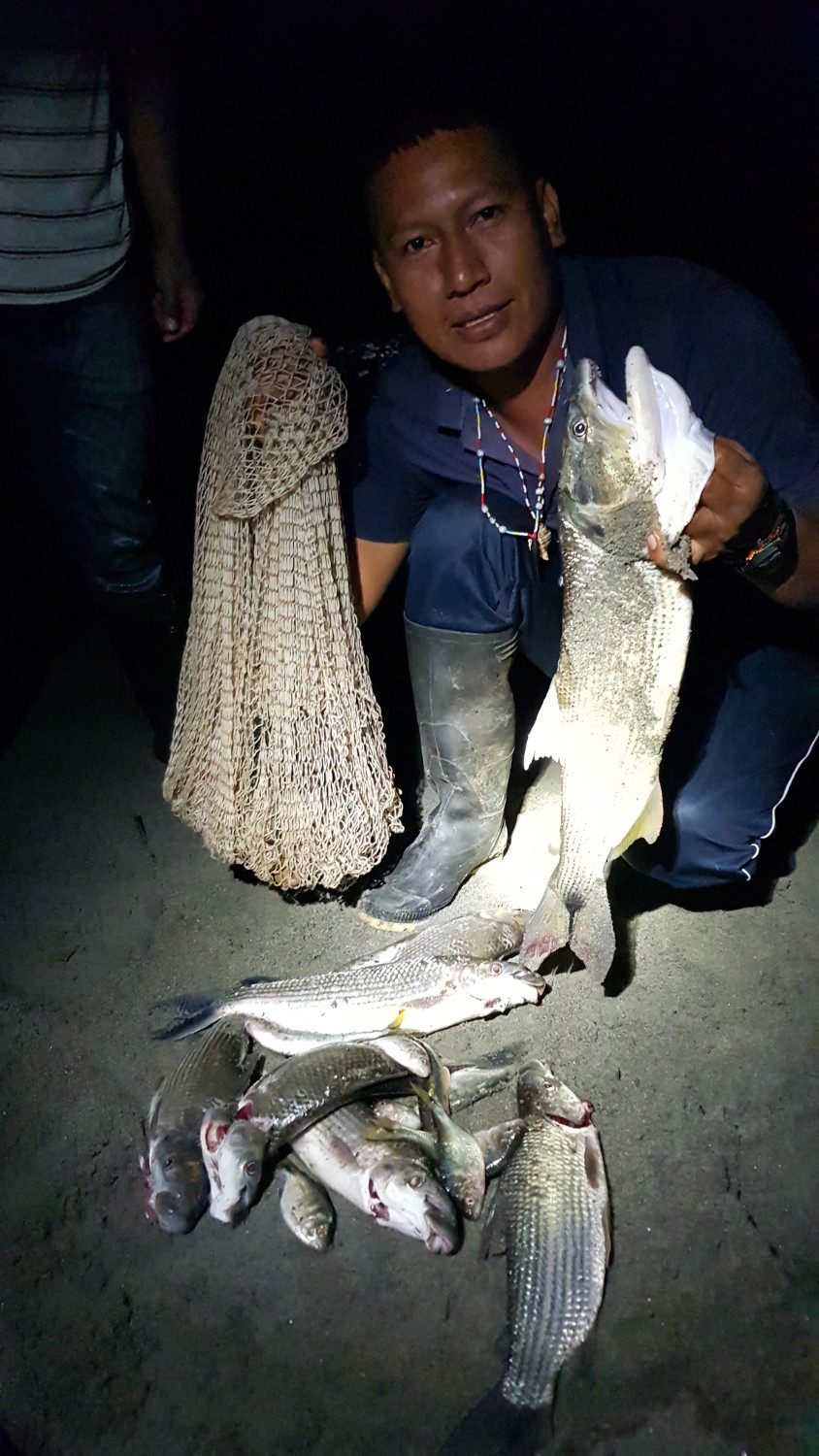
The yuca is boiling in a witch-like cauldron, heavily dented from years of use, over a fire built of three large tree trunks. To keep the fire slowly burning, the matriarch of the family inches the timber closer to the center from time to time. The fishing trip was a success. As the yuca, a potato-like tuber, simmers, the abuela is handling the catch, each of the 10-odd species that they brought in requiring different treatment. The sun is setting – we made it back just in time – and the smoke adds to the surreal feeling that the half-light of dusk creates. The little kitchen sits apart from the rest of the house, with half-way walls letting the smoke escape and the dim light filter in. I sit on the floor, as is custom, pondering the day’s efforts to provide this meal and the quality of the food itself.
Amazonian diet through the ages
Cultures across the globe have adapted their diet to availability, environmental constraints and physiological needs. The Amazonian diet – high carb, low fat – and an active lifestyle lead to several health benefits. For example, the Tsimané, an indigenous group in the Bolivian Amazon, were recently found to have the healthiest hearts on the planet (Kaplan et al., 2017). The Tsimané rely on hunting, gathering and subsistence farming. In this, they resemble the Indigenous populations of the Ecuadorian Amazon with whom we work – the A’I Kofan, Secoya, Siona and Waorani. The study examined heart disease risk factors among 705 Tsimané and found that low cholesterol, low blood pressure, low glucose, normal body-mass index, absence of smoking, and plenty of physical activity contributed to their exceptional heart health.
Early studies, conducted at a time prior to or during the major lifestyle changes that have accompanied recent colonization of the Ecuadorian Amazon, have also demonstrated a balanced diet and overall good health. A study conducted among the Secoya and Siona in the mid 1980s found that “by combining hunting, fishing and horticulture, the Siona-Secoya can arrive at an excellent nutritional blend: on the one hand the crops providing their energy are sure and stable, on the other their intake of animal products provides extra protein, iron, thiamin, niacin and retinol” (Bénéfice and Barral. 1991; p 14). In comparison, colonists living nearby showed more stunting, malnutrition and parasite infections.

Traditional Secoya dish: Bloch’s catfish, yuca and hot pepper stew.
We’ve all heard, “Eat your carrots. They’re good for your eyes.” Well, this is not just folklore; phytochemicals, the class of chemicals found in plants, are known to be beneficial for eye health. A recent study compared Kichwa agrarians and Waorani hunter and gathers living in Yasuni National Park and found that the greater variety of plants in the Waorani diet protected older people from eye degeneration. The Waorani consumed an astonishing 80 varieties of wild plants, compared to only 4 among the agricultural Kichwa. Myopia was absent in the younger group and significantly lower among the Waorani as compared to Kichwa for the over-40 group (London and Beezhold, 2015).

Waorani elders have excellent eyesight.
The limitations of a modern diet
More recent studies have compared indigenous people integrating to various degrees in the market economy and, contrary to what economic theory would have you believe, health actually deteriorates as these Amazonian populations move closer to a modern diet in which they replace their traditional foods with store bought fare. In a study comparing children from four indigenous nations of the Ecuadorian Amazon – A’I Kofan, Waorani, Shuar and Kichwa – researchers found that health status deteriorated with greater market integration:
“The A’I Kofan experienced overall better nutritional and growth outcomes comparatively, based on their strong continued reliance on traditional subsistence strategies with little participation in wage labor and sale of market goods” (Houck et al. 2013; p. 531).

Successful fishing with a throw net in Cofan territory.Similarly, people in the A’I Kofan village of Zabalo, who have limited interaction with the market economy, were found to have low blood pressure, partly determined by diet, even among older people (Fitton, et al, 2005). Market diets are more heavily based on rice, vegetable oils, meat from farm animals, wheat and sugar, of which only plain rice (cooked without too much oil) would constitute a food without drawbacks. The shift to a diet with higher fat and refined carbohydrates, without a counter-balancing increase in physical activity, leads to greater obesity and chronic diseases, such as diabetes (Dufour et al. 2016).
Further, commercial food is grown with a myriad of toxic chemicals absent in traditional agriculture. Unfortunately, the traditional food systems of the region cannot escape the greater forces at work, such as hydrocarbon and heavy metal pollution of soil, water and fish released during dirty oil extraction practices, gold mining, and rampant deforestation. A lack of concrete data around the levels of toxins in foods commonly eaten by indigenous villagers in the Ecuadorian Amazon is one of the factors motivating our work to study the presence of hydrocarbons and heavy metals in local fish and fresh water.
Meanwhile, as the embers burn…




